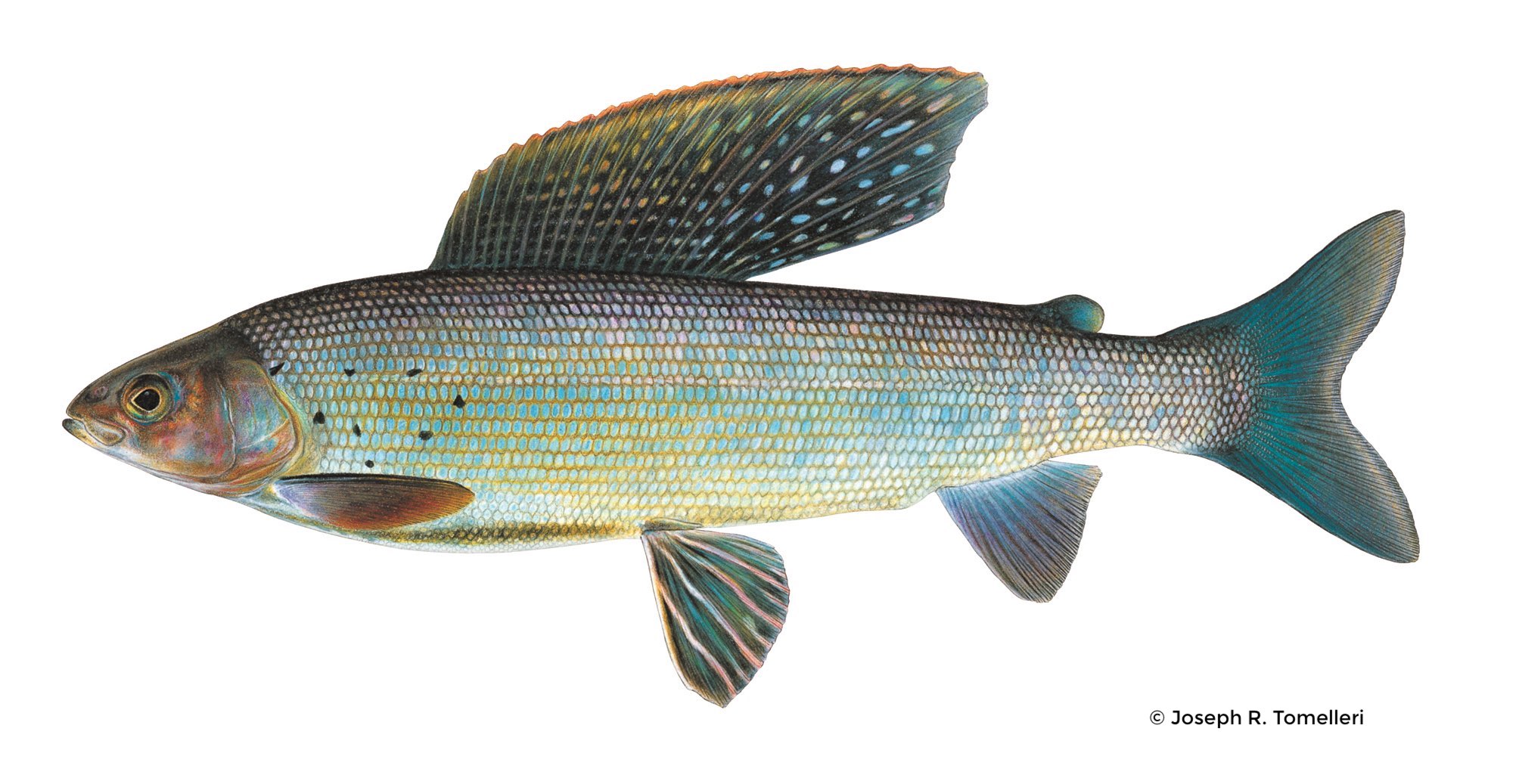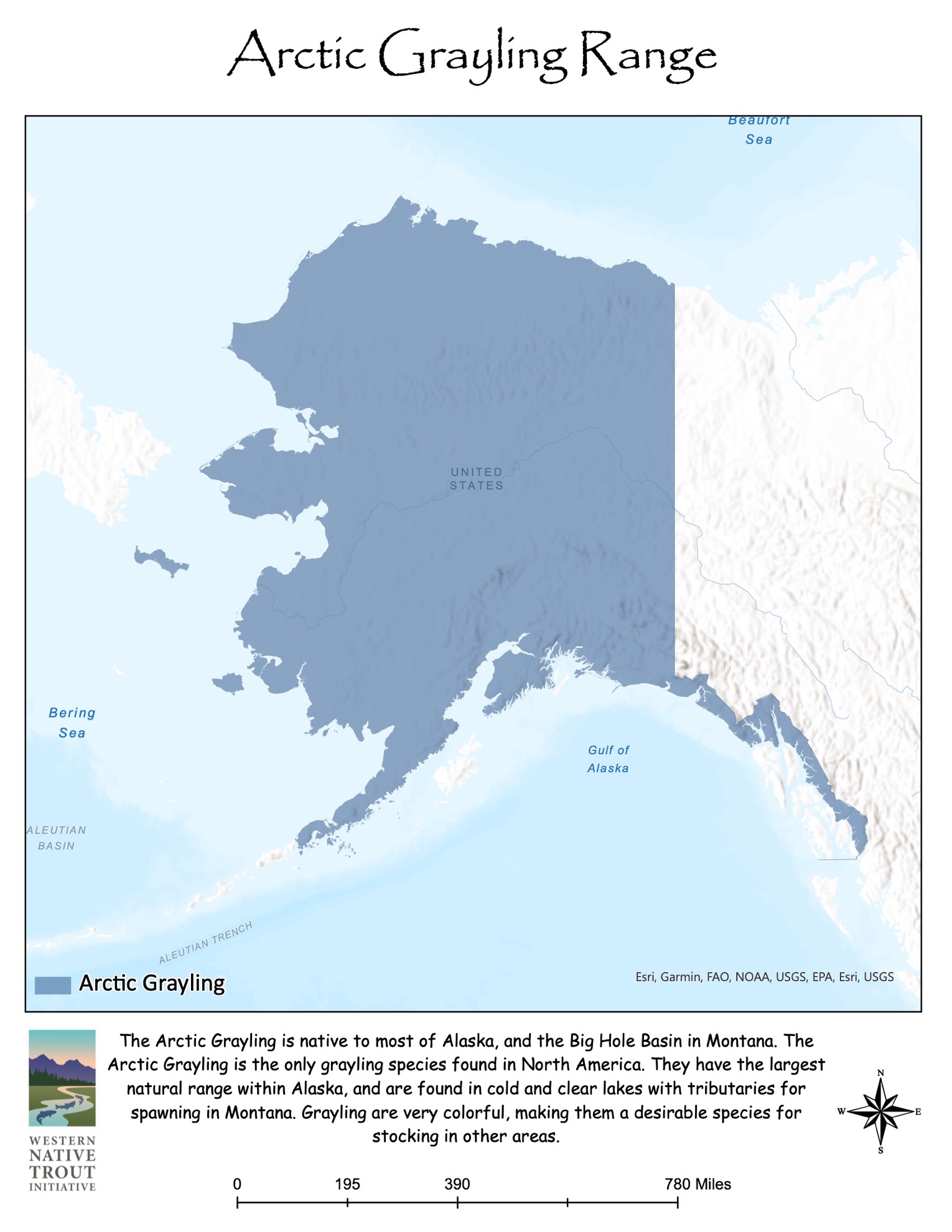
The Arctic Grayling (Thymallus arcticus) is one of the most beautiful freshwater fishes. Its most striking physical features are the large, sail-like dorsal (back) fin and colorful body markings. There are six grayling species in the northern hemisphere, but the Arctic Grayling is the only species found in North America. The only populations native to the lower 48 states were in Michigan and Montana, and the Michigan population is now extinct. In Alaska, grayling have the largest natural range of any sport fish, occupying nearly the whole state. Today in Montana, Arctic Grayling are found primarily small, cold, clear lakes with tributaries suitable for spawning. They do not coexist well with other fishes except cutthroat trout and others with which they evolved.
The Arctic Grayling comes in a wide array of colors. Coloration can vary from stream to stream. Their dorsal fins are typically fringed in red and dotted with large iridescent red, aqua, or purple spots and markings. These colorful markings are most dramatic on large grayling.

Additional Resources
- READ more information on Alaska Department of Fish and Game’s Arctic Grayling management.
- READ about Montana Fish Wildlife and Parks Arctic Grayling conservation.
- CLICK HERE to read information about the range and distribution of Arctic Grayling in Montana.
- READ more about Michigan Department of Natural Resources’ Arctic Grayling Initiative.
- To see beautiful video footage of Arctic Grayling, CLICK HERE.
- READ a great article about Arctic Grayling conservation in Michigan from The Wading List.
Recent News about Arctic Grayling
Upper Missouri River Distinct Population Segment (DPS) of the Arctic Grayling does not warrant protection under the Endangered Species Act (ESA)
MONTANA – The U.S. Fish and Wildlife Service announced its finding on August 20, 2014, that the Upper Missouri River Distinct Population Segment (DPS) of the Arctic grayling does not warrant protection under the Endangered Species Act (ESA). The Service reached this conclusion after analyzing the significant conservation efforts carried out by private landowners as well as federal and state agency partners to improve conditions for Arctic grayling in the Upper Missouri River basin. These efforts have helped bring the species to the point that it is not in danger of extinction now or in the foreseeable future, i.e., does not meet the definition of an endangered or threatened species under the ESA. Private landowners in the Big Hole and Centennial valleys worked through a voluntary Candidate Conservation Agreement with Assurances (CCAA) to achieve significant conservation of grayling within its range. Since 2006, over 250 conservation projects have been implemented under the CCAA to conserve Arctic grayling and its habitat, including riparian fencing, irrigation flow reductions, improved irrigation infrastructure, fish ladders, improved stock water systems, and both passive and active stream restoration. Habitat quality has improved and grayling populations have more than doubled since the CCAA began in 2006.
